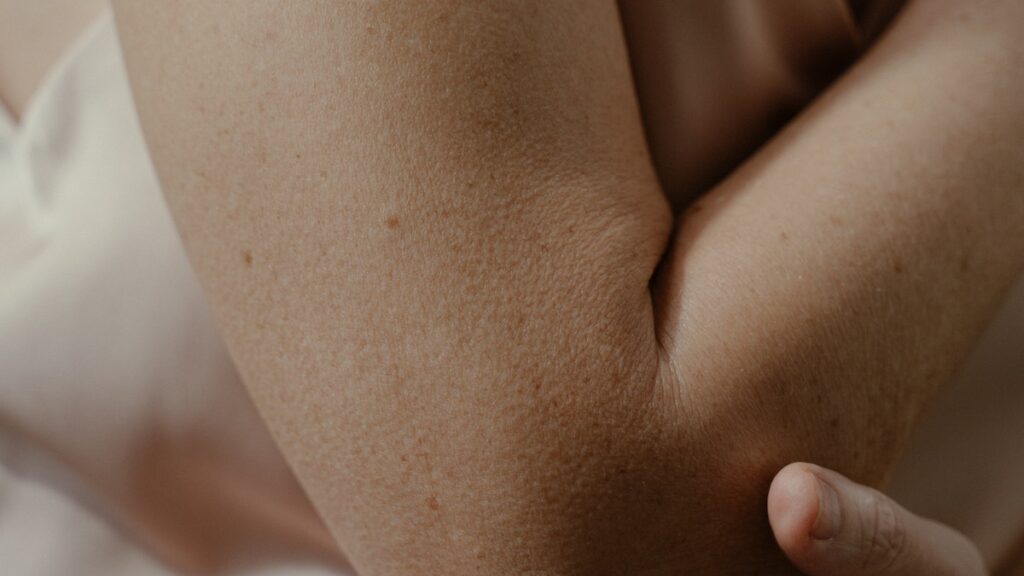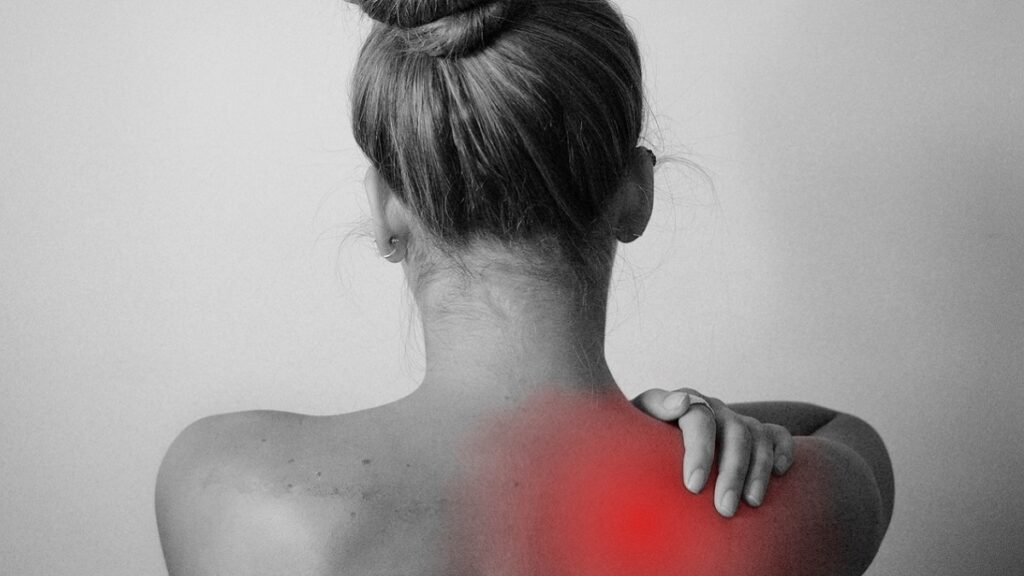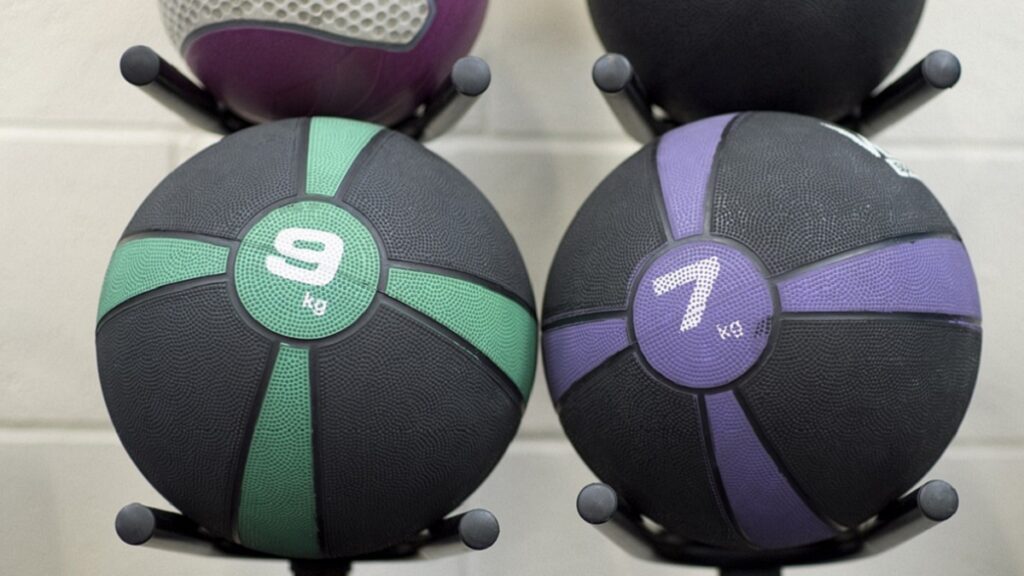Have you or someone you know complained about overhead press elbow pain? Well, there are many reasons you experience elbow pain during overhead presses. For example, you could experience pain due to compression, soft tissue, a bone fracture, tendinopathy, bursitis, and other musculoskeletal issues.
So, why does your elbow hurt when you do overhead press?
When you tightly grip the dumbbell or the bar when working out, the flexor tendons get activated. Resultantly, the wrist may curl forward or bend. The elbow will hurt if you activate the flexor tendon while the wrist is curled.
In this article, I will discuss elbow pain, anatomy, and what to do if the pain does not disappear. So, you are better off reading to the end.
Overhead Press Elbow Pain
Elbow pain while doing an overhead press can be due to several reasons, for example, restricted forearm moves or triceps.
Also, lifting hefty weights, going overboard (too many overhead press workout sessions within a short time), or not adequately doing warm-ups to prepare the forearm muscles and the triceps before working out could cause elbow pains.
Another reason, and the most common one, is incorrect lifting technique or a bad posture when doing overhead presses.
Overhead press workouts highly involve the elbow and tricep tendons. Resultantly, the elbows get strained and inflamed, thereby hurting during or after an overhead press.
The following are signs that your elbow has a problem,
- Soreness in the elbow during or after an overhead press
- Sharp pains when doing overhead presses or after
- Burning pain after overhead presses around the elbow joints or the elbow’s tip
- Slight or severe pain when straightening or bending your arm after the overhead presses
- Swelling, redness, or heat sensation around the elbows after overhead presses
Elbow Anatomy
Most powerlifters and weightlifters often suffer from elbow pains. Therefore, elbow pains are common. But before we go further, let us understand how God created the elbows.
Well, there are three bones in the elbows:
- Ulna of the forearm
- The humerus
- The radius

These joints are connected to form 3 smaller ones and connect to other small muscles. These muscles are 16, and they tend to cross the three smaller joints.
So, without these joints and the 16 muscles, your elbow cannot straighten or bend. Also, it would be hard for the forearm to rotate.
To fix the elbow pain, it is necessary to understand several things and ask ourselves some questions, as they are crucial to getting the solution(s) to a hurting elbow.
- Does nerve irritation cause pain in the elbow?
- Where precisely in the elbow is the pain?
- What causes the pain in the affected area of the elbow?
Let us go deeper.
Lateral Elbow
In the past, meds referred to the pain in this section as “lateral epicondylitis” or “tennis elbow,” but not anymore. Today, this pain is referred to as “lateral epicondylalgia.” The change of name is owed to the fact that people experiencing “tennis elbow” inflammation are not always tennis players.
Also, because there is no inflammation in most lateral elbow pain cases, the medics found it better to change the name of the pain.
In most cases, lateral elbow pain is a result of tendinopathy. This occurs due to the tissues degrading due to overuse and is likened to quad tendon or patellar (kneecap) injury.
When you grip something while this part of the elbow is injured, you will often experience some pain. So, workouts such as a bicep curl that makes your hand rotate from the palm down will trigger pain in the lateral elbow. Also, activities that make your palm face downwards to grip anything trigger lateral elbow pain.
Medial Epicondyle
Though most medics refer to the pain in the Medial Epicondyle as “medial epicondylalgia,” previously, it was referred to as “medial epicondylitis” or “golfers elbow.”
When an overuse injury occurs, the tissues surrounding the medial epicondyle become tender.
Worse still is that you are likely to experience much more pain when you stretch your wrist into extension or do resisted wrist flexions.
The posterior and the anterior get injured, like the elbow sides. And this does not just happen to strength athletes who often experience elbow pains due to repeated use of the tendons and muscles, commonly known as soft tissues; anyone can have this problem. However, elbow pains in athletes could also be a result of the other nerves spanning the arm.
In the elbow’s backside are the triceps’ 3 heads converging to become a tendon. This tendon inserts into the olecranon process. On the other hand, the opposite side has brachialis muscles, biceps attachments, and brachioradialis.
The elbow hurts when the nerves spanning the arms stretch or compress too much. Sometimes, you may also experience numbness or a burning sensation. Sometimes these problems can affect the entire arm and, in extreme cases, the hand.
Ulnar Nerve
This nerve is highly susceptible to stretching, compression, and friction. This is because it runs through the elbow but on the inside.
Running through the arm, the ulnar nerve passes through the cubital tunnel. This tunnel narrows to 55% each time your elbow bends. Consequently, your elbow becomes more compression-prone, and you can get injured anytime.
When you encounter a compression injury, you might experience numbness and aching. Typically, numbness affects the inside of the forearm. In severe cases, it might progress to the bicep region. Still, it may affect the 4th and 5th fingers.
If you do pull-ups and bench presses often, your elbow might flex. The same applies if you receive the barbell when cleaning is in progress in the front rack position.
If you love sleeping on your side while bedding the elbow, you might as well experience numbness and aching.
Worse still is that if the irritation progresses, your gripping strength might decrease over time.
Radial Nerve
The Radial nerve passes through the radial tunnel, a small passageway between tissues. The radial nerve goes through the lateral arm, crossing the joint in your elbow. When the radial nerve is compressed or starts aching, you may suffer from radial tunnel syndrome.
You will experience extreme pain or sharp aching when the radial nerve is entrapped. In some cases, the pain extends to the hand.
The above are the areas of your elbow that may experience pain, possibly due to various reasons. Let us see the common reasons your elbow could be hurting.
During heavyweights workouts, most people experience overhead press elbow pain caused by tear and wear stresses. The stresses occur due to the following:
- Stability issues
- Posture problems
- Mobility problems
These issues emerge because of not using the proper technique to lift weights. Another issue is a lack of proper loading schemes. In addition, if your mobility is limited, you will expose your elbows to pain.
So, to avoid any overhead press elbow pain, you must ensure that you avoid these issues.
Your wrist must move comfortably to perform overhead press workouts without a problem. The same applies when doing other weightlifting workouts. Your wrist should be able to bear all the weight to avoid any accidents and pain in the elbow.
So, when you extend the wrist for a complete handstand, the entire body works together to hold the necessary weight. Otherwise, some of the smaller structures found under the chain may get strained so as to offer extra weight support. Resultantly, your elbow would get strained and injured.
Parting Shot
Overhead press elbow pain can make you uncomfortable. In the worst cases, it could limit your mobility and hinder you from doing any weightlifting exercises, among others. While this is true, treating the problem can sometimes be tricky.
For experienced medics, trying to find out the exact cause of the pain and which part of the elbow hurts can be a great start to recovery.
A few exercises would also come in handy in treating elbow pain, but your doctor is to recommend the most effective ones at that moment.
Nevertheless, if you experience any pains during a workout, whether overhead presses or elbow exercises, please give yourself a break. Your elbow may need more time to recover.
If, after a few days, you notice no positive progress, please visit your doctor for a check-up.



